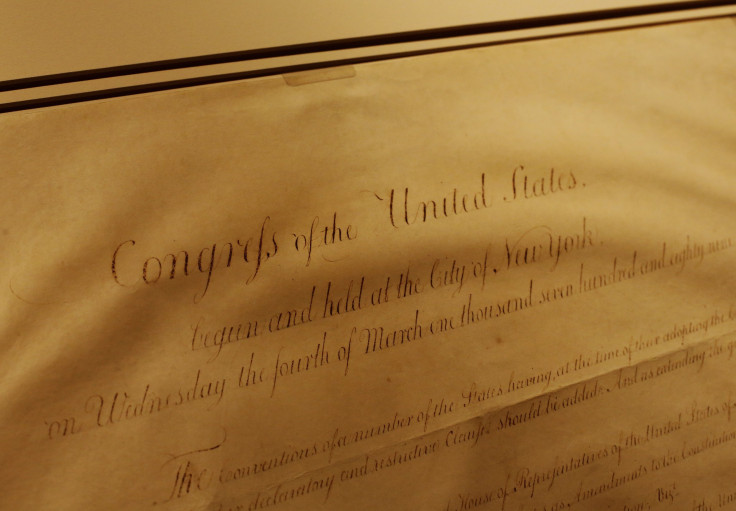Happy Birthday John Hancock: 7 Facts To Know About The Founding Father

As the Second Continental Congress' presiding officer, John Hancock signed his way into history along with his fellow convention delegates.
Known as "The Calligrapher," Hancock's large signature on the Declaration of Independence has become a celebrated symbol of the document and the birth of the United States of America. But, how much do you know about Hancock. In celebration of his birthday today, we've gathered 10 important facts you may not know about the man.
1. His Date Of Birth Is Up For Debate
Historians and handwriting experts continue to question the actual date of Hancock's birth. According to Vocus, the pen and ink industry chose Jan. 23 as National Handwriting Day in the 1990s and the Writing Instrument Manufacturers Association claims Hancock's birth date as Jan. 23, 1737. However, the American Association of Handwriting Analysts claims his birthday is actually on Jan. 12, 1737.
2. Hancock Played A Part In the Boston Tea Party
Hancock was responsible for firing up the crowd at meetings held to express anger at the British, according to Yahoo. However, he didn't actually throw any tea over the side of the boat.
3. He Took His Studies Very Seriously
Hancock graduated from Harvard at the age of 17.
4. He Was A Governor
After his election in 1780, Hancock served as governor of Massachusetts until his death in 1793, says History.com.
5. He Was Raised By His Aunt And Uncle
Following the death of his father, Hancock's mother sent him to live with Lydia and Thomas Hancock -- his aunt and uncle. They later adopted him, according to Biography.com
6. Hancock Did Not Attend The Constitutional Convention in Philadelphia.
Due to health issues, he was unable to attend the 1787 convention. However, he still took a lead in the Constitution's ratification in the state of Massachusetts.
7. He Was The First To Sign The Declaration Of Independence
As the president of the Second Continental Congress, Hancock was the first to sign the document.
© Copyright IBTimes 2024. All rights reserved.






















